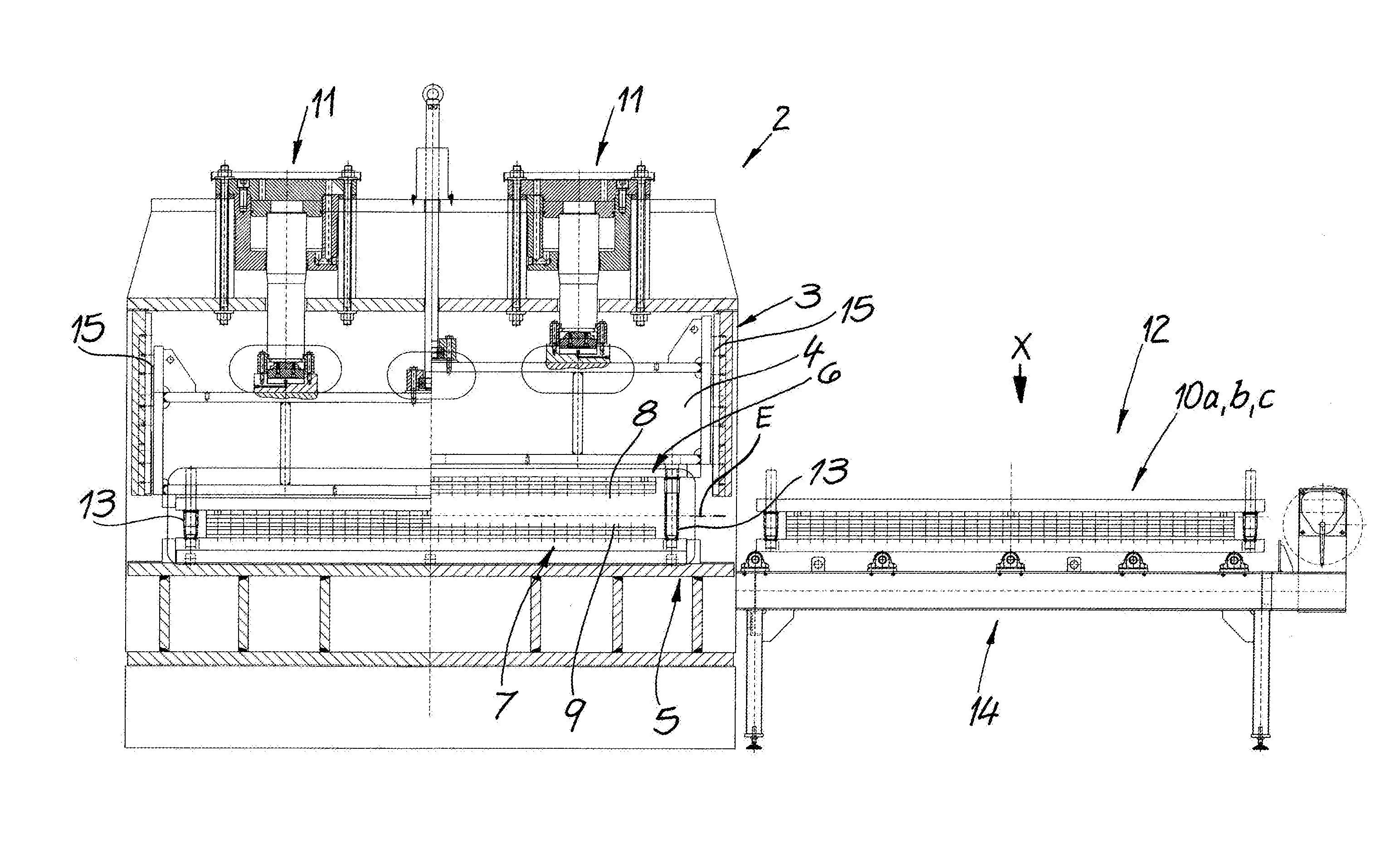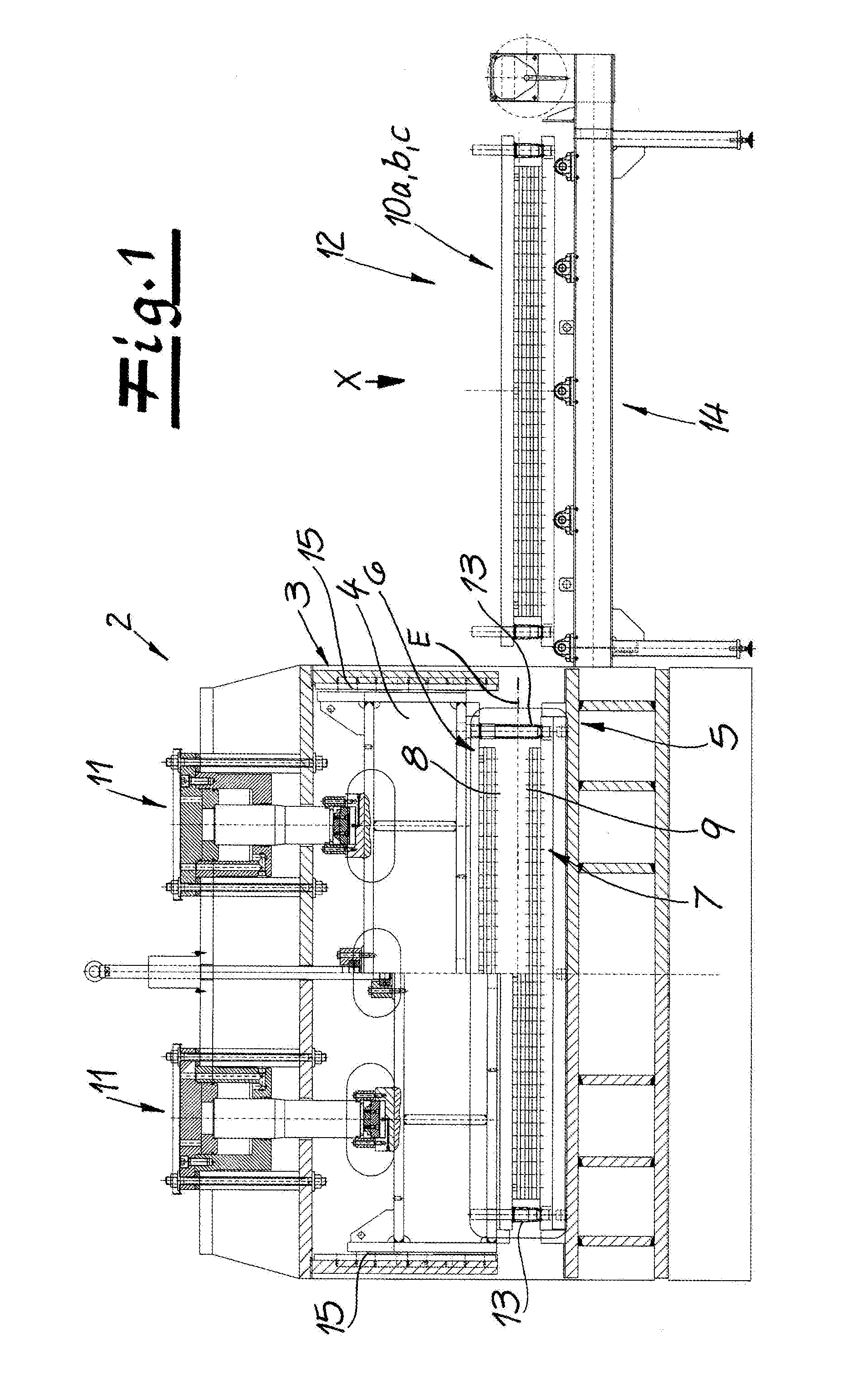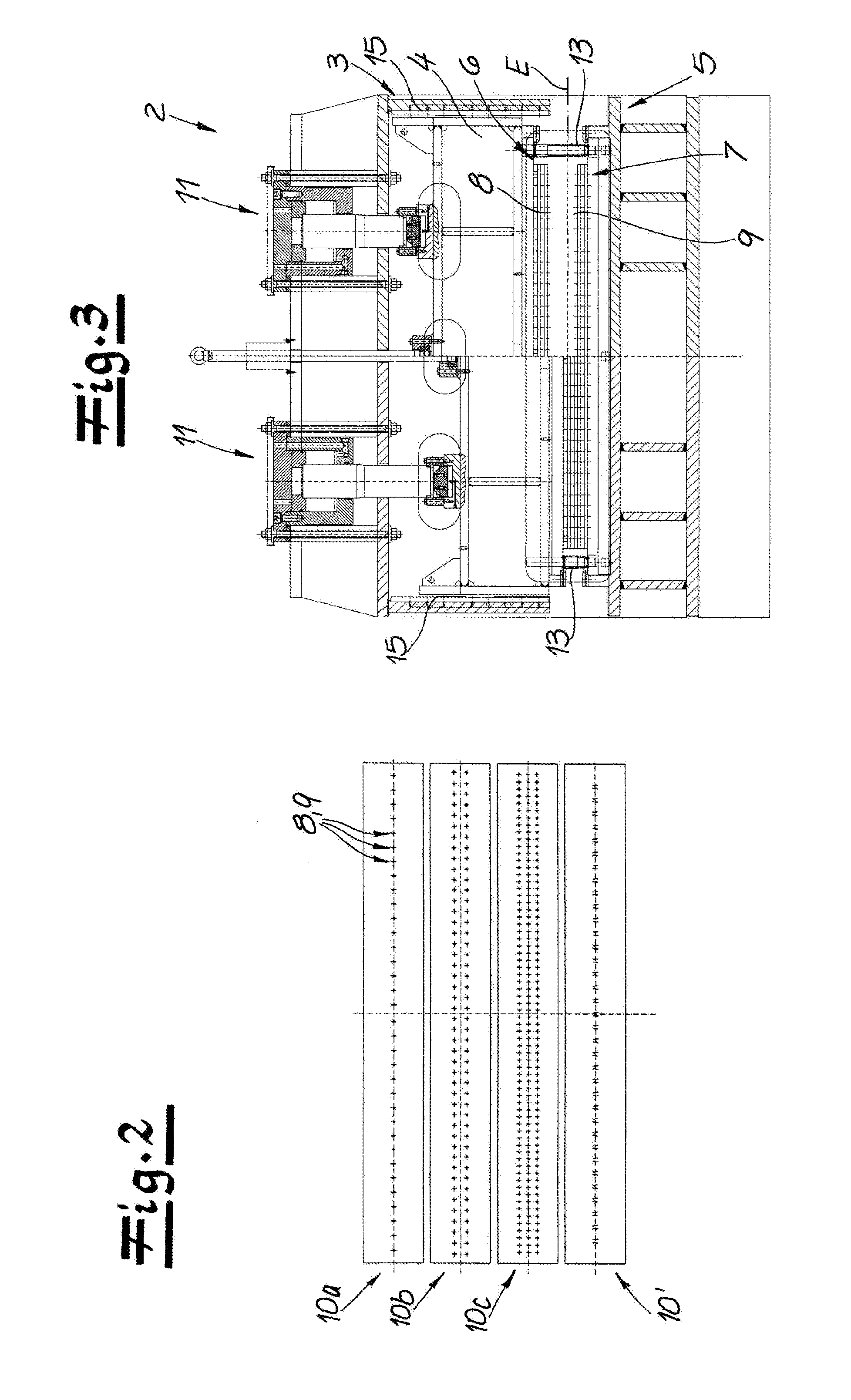Method of connecting metal strips
a metal strip and metal strip technology, applied in metal-working equipment, metal-working equipment, manufacturing tools, etc., can solve problems such as negative effects on further processing
- Summary
- Abstract
- Description
- Claims
- Application Information
AI Technical Summary
Benefits of technology
Problems solved by technology
Method used
Image
Examples
first embodiment
[0044]In FIGS. 1 and 2 a first embodiment is illustrated in which the tools 6, 7 are moved by the tool changer 12 transversely with respect to the strip-travel direction B out of the working position and into the waiting position. In this embodiment the tool changer 12 is laterally adjacent to the press 2 for this purpose. It has a change table 14 with a plurality of tool sets 10a, 10b, 10c one behind the other in the strip-travel direction B. If the tool located in the connection press 2 is to be replaced, it is pulled (or pushed) transversely with respect to the strip-travel direction B out of the press and onto the change table 14. The change table 14 then moves parallel to the strip-travel direction, for example by one position, so that then another tool can be pushed (or pulled) transversely with respect to the strip-travel direction B into the press 2. In the simplified plan view in FIG. 2 it can be seen that in the illustrated embodiment four different tools or tool sets 10a,...
second embodiment
[0046]While the tool sets 10a, 10b, and 10c or 10 are changed transversely with respect to the strip-travel direction B in the embodiment according to FIGS. 1 and 2, FIGS. 3 to 5 show a second embodiment in which the tool sets 10a, 10b, and 10c or 10 are moved along the strip-travel direction B for changing purposes. The individual tool sets are in turn one behind the other in the strip-travel direction B; however, this time they are not laterally offset relative to the connection press 2, but are offset relative to the connection press 2 in the strip-travel direction. Nevertheless, travel of the metal strip is not disrupted, since the upper tools 6 are always above the metal strip or the strip plane E and the lower tools 7 are always below the metal strip, and since the guide posts 13 are always outside the strip region. In this embodiment the tool set can then also be changed when the strip is in the machine. FIG. 4 shows a view in which, for example, the punch tool 10 is in the m...
PUM
| Property | Measurement | Unit |
|---|---|---|
| Fraction | aaaaa | aaaaa |
| Fraction | aaaaa | aaaaa |
| Fraction | aaaaa | aaaaa |
Abstract
Description
Claims
Application Information
 Login to View More
Login to View More - R&D
- Intellectual Property
- Life Sciences
- Materials
- Tech Scout
- Unparalleled Data Quality
- Higher Quality Content
- 60% Fewer Hallucinations
Browse by: Latest US Patents, China's latest patents, Technical Efficacy Thesaurus, Application Domain, Technology Topic, Popular Technical Reports.
© 2025 PatSnap. All rights reserved.Legal|Privacy policy|Modern Slavery Act Transparency Statement|Sitemap|About US| Contact US: help@patsnap.com



